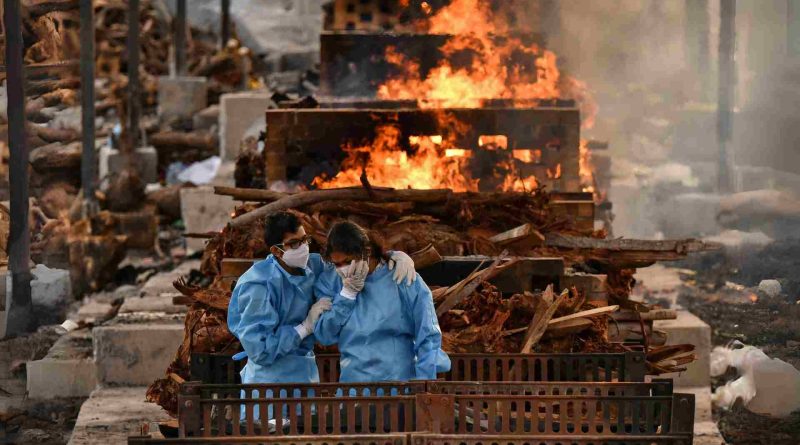India’s COVID Crisis: Beyond Funeral Pyres
Criticism mounts against the portrayal of India’s COVID-19 ordeal through the lens of funeral pyres in Western media, observes Shareen Joshi. These recurring images, while aiming to capture the gravity of the situation, oversimplify India’s multifaceted narrative and inadvertently serve political agendas.
For many observers abroad, the Indian pandemic saga is distilled into a single, haunting image: the burning funeral pyre. Major news outlets like the New York Times, CNN, the Washington Post, and BBC prominently feature these visuals almost daily, often with content warnings for sensitive viewers.
While acknowledging the intent to respect audience emotions, many Indians voice frustration, seeing these images as a biased portrayal. Social media erupts with critiques of Western media, accusing them of a skewed narrative. Tweets decry “Anglo elites” orchestrating a smear campaign against India, contrasting the coverage with the subdued reporting on COVID-19 deaths in the UK.
Initially skeptical, I, as an economist, perceived these visuals as essential in conveying the severity of India’s crisis, given the challenges in accessing reliable official data. However, upon closer examination, the sheer volume of such imagery struck me as excessive. Missing from the narrative are depictions of frontline workers, scientists, and grassroots organizations battling the pandemic.
The fixation on funeral pyres isn’t new; it echoes historical orientalism, where Western depictions of Hindu cremations lacked cultural nuance. Ironically, Western societies quietly adopted some of these practices over time, with cremation becoming mainstream in many Western countries.
Against this backdrop, the anger among Indians towards funeral pyre imagery is understandable. Yet, what often goes unnoticed is how these media missteps are weaponized by Indian political factions.
Every image of a funeral pyre shared by Western outlets strengthens the narrative of Prime Minister Narendra Modi’s BJP, positioning them as defenders against Western influence. Dissent is dismissed as foreign manipulation, a tactic to deflect scrutiny from governance failures.
In this context, broadening the coverage of India beyond funeral pyres becomes imperative. India’s story extends far beyond tragedy; it’s a tapestry of resilience and community solidarity. Stories of communal harmony, grassroots initiatives, and scientific endeavors deserve equal attention.
For Western audiences, accustomed to simplistic narratives, it’s time to embrace India’s complexity. Indians seek nuanced coverage that portrays them as active agents navigating a crisis with resilience and innovation. Funeral pyres, while symbolic, are but one facet of India’s rich narrative.

